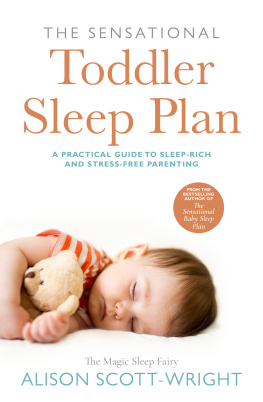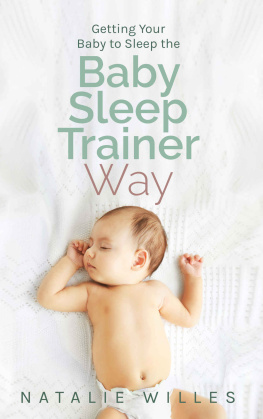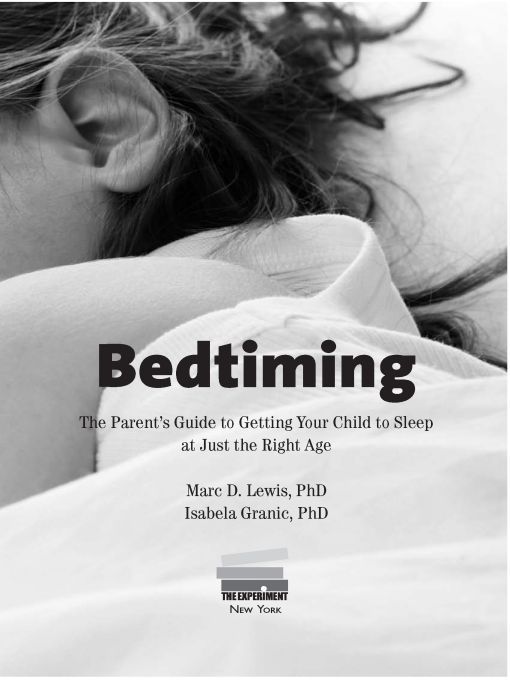Table of Contents
Bedtiming
The Parents Guide to Getting Your Child to Sleep at Just the Right Age
Because sleep training is challenging and difficult, your child should be at his or her best when you begin. This handy reference guide sets out which ages and stages are problematic for getting your child to sleep and those that make it relatively easy. For more detail on these developmental windows, you can refer to the chart on pages 130 to 131 and the information in Chapter 4. Remember, the likelihood that your child will easily learn to sleep on his or her own has less to do with the precise technique you choose than with when you try to apply it.
0 TO 2 MONTHS
WHY NOT NOW? There is too much going on. Your babys body needs time to develop and stabilize its own cycles. Because of that, it may be difficult or impossible to establish desirable sleep habits before sleeping at night becomes routine.
WHAT YOU CAN DO INSTEAD: Whatever gets you through the night. Rocking, bouncing, cuddling and gliding are all great options. Anything you do, you can undo with proper sleep training at a later stage of development.
2 TO 4 MONTHS
WHY NOW? This is a period of relative stability and resilience. There is no good reason not to try sleep training at this age if your intuition says go! and your baby responds favorably. Some parents, however, feel that this age is just too early to start sleep training, so trust your instincts.
WHAT YOU SHOULD KNOW: Young babies have a hard time recovering from intense distress, and past a certain threshold (about 5 to 10 minutes) they may continue to cry until exhaustion sets in. This may be a signal that now is not the right time. If intense distress continues to be a regular part of bedtime after a week, it can be another sign that now isnt the right time. If thats the case, we suggest you wait for the next window.
4 TO 5 MONTHS
WHY NOT NOW? As your baby learns new interpersonal skillsskills that call for expected responses from you and lead to a stronger bond between youits better not to disturb them until theyve really begun to solidify. Essentially, sleep training at this age can cause frustration and confusion because your baby needs you to be her playmate, not her disciplinarian.
WHAT YOU CAN DO INSTEAD: Avoid compounding this period of often stressful growth with the added stress of sleep trainingboth for you and your baby. Continue to establish predictable and consistent bedtime routines, but dont push anything that doesnt feel right.
5 TO 7 MONTHS (AN IDEAL TIME)
WHY NOW? Babies are engaged with the world of objects around them (more than they are with people) and show almost no signs of separation distress. This combination creates one of the best times for sleep training. Sleep train any earlier and your baby is less stable. Sleep train any later and your baby will feel the pangs of separation distress to at least some degree.
WHAT YOU SHOULD KNOW: Your baby will probably start to grow out of swaddling at this point, if thats a technique youve been using. Consider how you might orchestrate sleep training with moving away from swaddling so that your baby doesnt have to deal with the stress of both at once.
To really get a full nights sleep, youll need to eliminate night feeding. Try gradually reorganizing your babys feeding schedule so that he consumes most of his nourishment during the day.
Nighttime noise may be a bigger problem than ever before as your baby becomes more alert to whats going on around him. Try running a fan for white noise.
8 TO 11 MONTHS (ONE OF THE WORST TIMES)
WHY NOT NOW? Separation now means something to your babythat youre not responding to his attempts to bring you backwhich can be upsetting and traumatic for your baby and destructive to your attempts at sleep training.
WHAT YOU CAN DO INSTEAD: Continue to be consistent in your bedtime routines but be responsive to your babys needs. This stage will pass!
12 TO 16 MONTHS
WHY NOW? This is another emotionally stable period where your baby is as focused on the world around her as she is on you. The challenges at this stage will involve your now-toddlers energetic spirit and intelligence. If your child still isnt sleeping through the night, this may be your last chance for an efficient and fully satisfactory sleep-training experience, so stick with it!
WHAT YOU SHOULD KNOW: Playnot sleepis number one on your babys list of priorities. Youll need to balance loving attention and concern with a firm determination to avoid the tricks and traps your innovative toddler will use to avoid bedtime.
17 TO 21 MONTHS
WHY NOT NOW? Sleep training at this age is bound to be hampered by two interlocking issues: your toddlers fear of separation and his determination to hold his own in conflict situations.
WHAT YOU CAN DO INSTEAD: Wait it out. The small amount of sleep you might gain isnt worth the battle. Stay consistent in bedtime routines, but be gentle on yourself and on your emerging Terrible Two.
22 TO 27 MONTHS
WHY NOW? Even if youve done successful sleep training before this stage, some of it has probably come undone in the last few months. But now your child is more calm, more stable, and more secure than she was just recently.
WHAT YOU SHOULD KNOW: Introduce sleep training a little differently by involving rules and goals, because thats what 2-year-olds understand best. Sleep training will be trickier at this stage than at any previous one, because your toddler has a much more finely tuned ability to manipulate situations to get what he wants. Make sure that fun bedtime routines involving stories, songs and cuddly stuffed animals make the rewards of good sleep habits obvious to him.
28 MONTHS TO 3 YEARS
WHY NOT NOW? A tricky combination of a capacity for intense jealousy and a willingness to push boundaries makes for a determined yet irrational little girl or boy. By this age, though, childrens development becomes quite individual, so follow your instincts as to what is right for your child.
WHAT YOU CAN DO INSTEAD: Give sleep training a pass for several months if your child is prone to jealousy, if he is on the defiant end of the spectrum, or if he tends to wage battles whenever rules and regulations are not carved in stone. If your child has an easier disposition, if he already seems comfortable and relaxed about his role in the family, it might not be necessary to wait any longer. In either case, consistency is key.
3 TO 3 YEARS
WHY NOW? This is the last window of opportunity to initiate or repair sleeping habits with ease. Your child is motivated to be a valued member of the family, and you can use that concern to your advantage.
WHAT YOU SHOULD KNOW: Stuffed animals or other cuddly items are a key tool for bedtime comfort, as are well-established family routines for bedtime.
3 TO 4 YEARS
WHY NOT NOW? Feelings of shame can be debilitating for some children starting around 3 years of age; sleep training should be avoided for these sensitive kids. While they are lying in bed alone, children have plenty of time to ruminate on what their parents might be thinking about them. And if those thoughts include images of rejection, disapproval, or even abandonment, then they may lead to habitual worries that will eventually crystallize into long-lasting insecurities.










